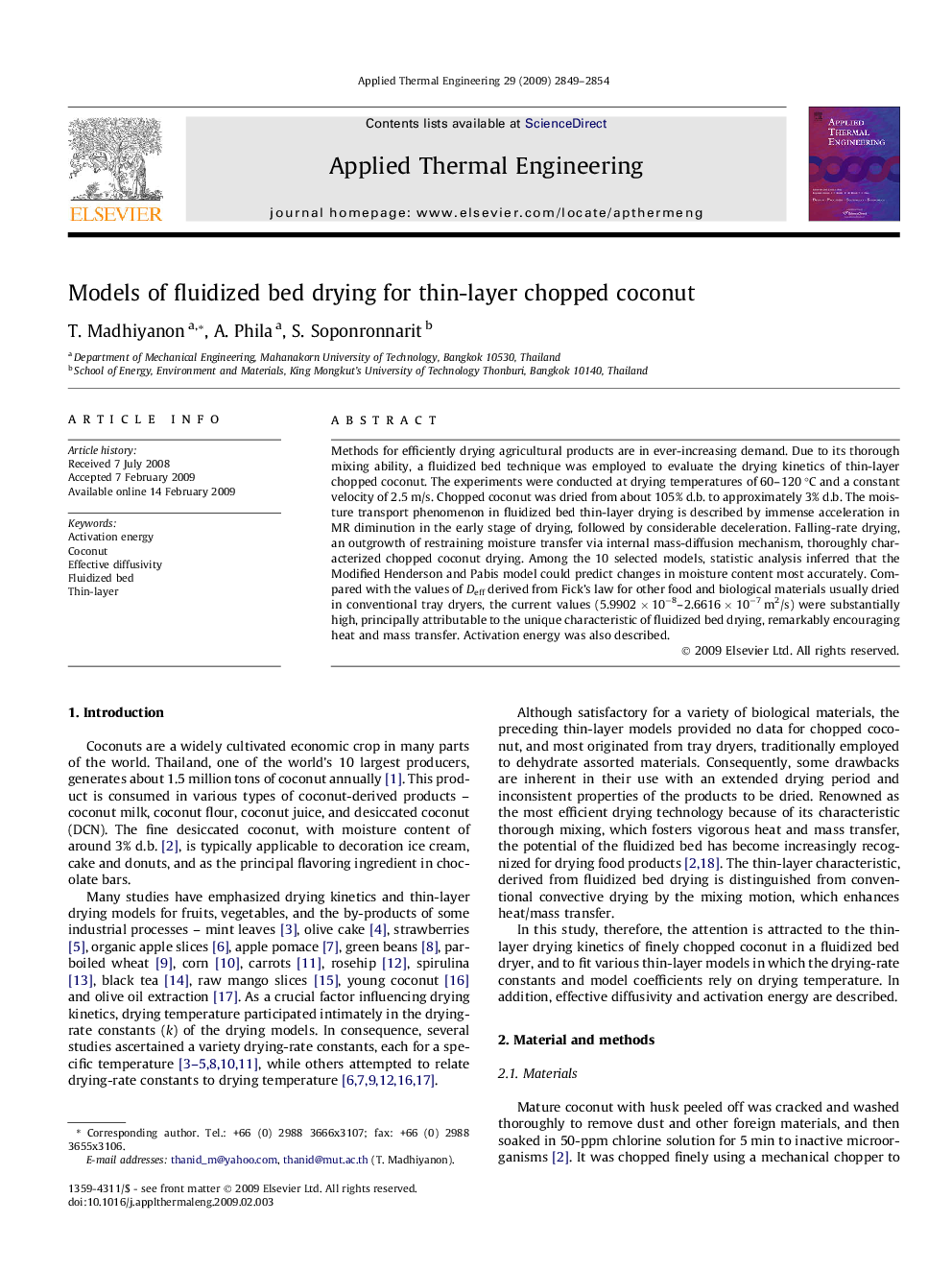| Article ID | Journal | Published Year | Pages | File Type |
|---|---|---|---|---|
| 648769 | Applied Thermal Engineering | 2009 | 6 Pages |
Methods for efficiently drying agricultural products are in ever-increasing demand. Due to its thorough mixing ability, a fluidized bed technique was employed to evaluate the drying kinetics of thin-layer chopped coconut. The experiments were conducted at drying temperatures of 60–120 °C and a constant velocity of 2.5 m/s. Chopped coconut was dried from about 105% d.b. to approximately 3% d.b. The moisture transport phenomenon in fluidized bed thin-layer drying is described by immense acceleration in MR diminution in the early stage of drying, followed by considerable deceleration. Falling-rate drying, an outgrowth of restraining moisture transfer via internal mass-diffusion mechanism, thoroughly characterized chopped coconut drying. Among the 10 selected models, statistic analysis inferred that the Modified Henderson and Pabis model could predict changes in moisture content most accurately. Compared with the values of Deff derived from Fick’s law for other food and biological materials usually dried in conventional tray dryers, the current values (5.9902 × 10−8–2.6616 × 10−7 m2/s) were substantially high, principally attributable to the unique characteristic of fluidized bed drying, remarkably encouraging heat and mass transfer. Activation energy was also described.
